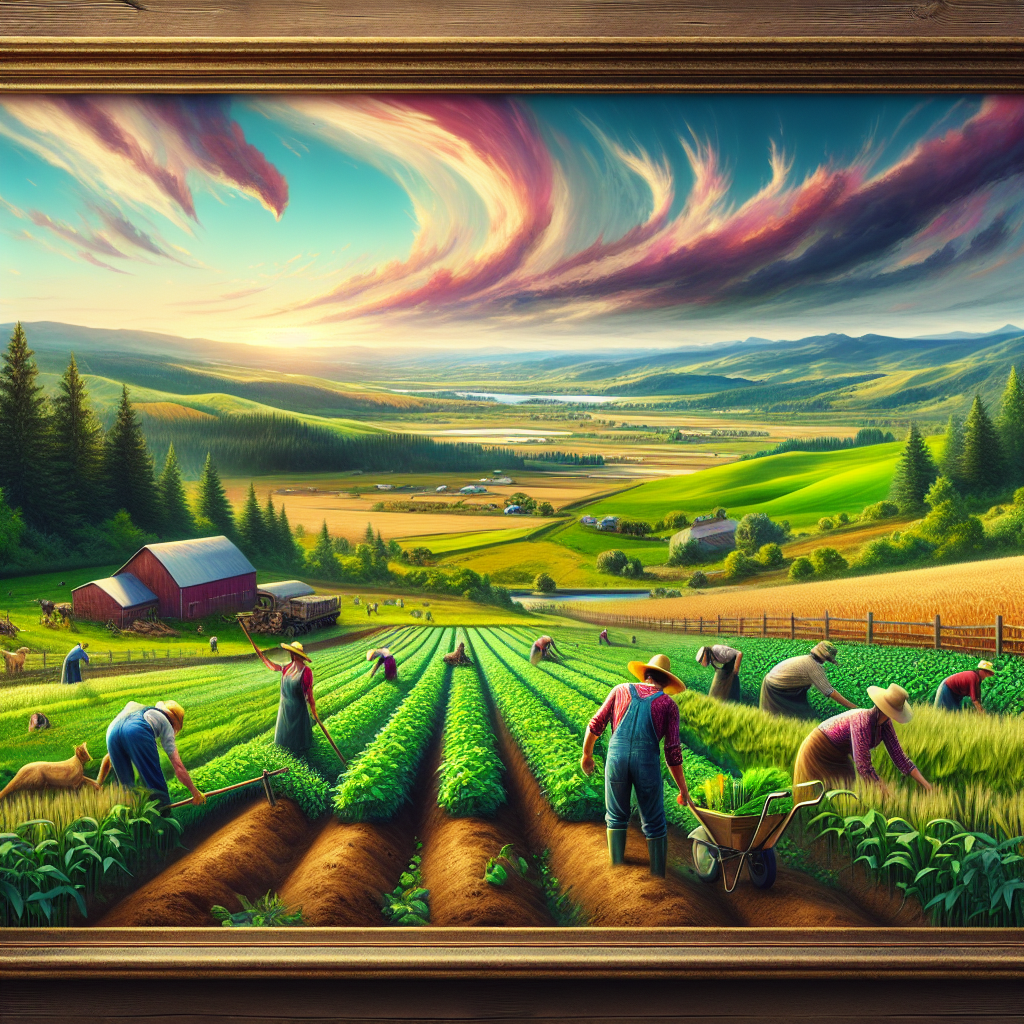Regenerative Roots Run Deep in Oregon Soil
Stroll along the lush meadows of Lane County, where the McKenzie River gurgles its way past dense coniferous forests, or venture out to the vegetable patches in sunny Josephine County, where Rogue River tumbles into fervent rapids. There, you’ll witness an effervescent revolution bubbling beneath our beloved Oregon soil—a shift towards regenerative farming. As Oregonians, we’ve always been trailblazers, so it’s no surprise we’re once again charting a path forward in agriculture. It’s a holistic, conservationist, forward-thinking approach—the very essence of the Beaver State’s spirit.
Rising From the Ashes: Discontent with Conventional Agriculture
Regenerative farming isn’t the latest Portland boutique buzzword, but a heartfelt response to preserving our land. It’s a choice many local farmers—from the cherry orchards of Hood River to the vineyards of Willamette Valley—are making as they steer away from conventional agriculture. See, we’ve watched as pesticides weathered down our picturesque Umpqua Valley, turning the verdant hues a sorrowful yellow, and how soil erosion etched hauntingly into the faces of our precious Siskiyou Mountains.
When you’ve tasted the vibrant snap of Oregon-grown snap peas at the Tigard Farmers’ Market or savored the rich layers of a Willamette Valley Pinot Noir, you’ll understand why it’s crucial to keep our soils healthy, our waters clean, and our skies clear. It’s not just about the Earth—it’s about the taste of that crisp Fuji apple right out of the orchard, or the thrill of catching Steelhead trout fresh from the blessedly clean Clackamas River.
Digging into the Soil: The Basics of Regenerative Farming

Regenerative farming isn’t just some wacky idea cooked up by a couple of retirees in Ashland who probably had one too many Rogue Ales. It’s about rolling up your flannels and getting back to basics, fostering soil health, reducing carbon footprint, and preserving our beautiful home for future generations. It’s about maintaining a living business laboratory, like the innovative pasture rotation at Deck Family Farm outside Eugene, or the emphasis on biodiversity at Dancing Roots Farm in Troutdale.
Regenerative farming is like making a cup of Stumptown Coffee—it’s all about maintaining the perfect balance. You got to have the right mix of plants to ensure soil nutrients, grazing animals to cycle those nutrients, and native organisms to keep the soil alive. And just like how a Cascadian winter switches from gentle rain to a heavy downpour, shifting according to the land and weather is critical for regenerative farming to bloom.
From Tillamook Pastures to Rogue River Valleys: How Oregon Farmers Lead the Field
Quite a few Oregon farmers, in keeping with the rugged tradition of pioneers before them, have taken up regenerative farming practices with a near-religious fervor. The boys at Carman Ranch in Wallowa County are showing us all how it’s done by using cattle to mimic natural grazers and improve their land. And let’s not forget the good folks at Salad Days Farm in Ashland, who rotate vegetable fields with chickens to create a deliciously harmonious eco-cycle.
Out on the coast, the Tillamook County’s Creamery Association — much loved for their sharp cheddar and heavenly ice cream — are betting big on regenerative farming and creating a healthier, more sustainable dairy system. Now that’s an initiative no Oregonian can resist, especially with a pint of Marionberry Pie ice cream at stake!
Helping Out the Little Guy: The Stewardship of Local Organizations
Here in Oregon, we root for the Portland Trailblazers, Willamette Valley wines, and the small-time farmers. We’ve got some great organizations committed to sustainable practices, like Salem’s Marion-Polk Food Share, who own their farm and grow food to feed the community, or Portland’s Zenger Farm, a functioning urban homestead that offers hands-on farm education.
Then there’s Friends of Family Farmers, a grassroots group providing farmers with the tools they need to shift from conventional methods to regenerative agriculture. They may not have a big, showy HQ like NIKE on Bowerman Drive, but their heart for Oregon’s land and farmers runs just as deep.
Seed to Sustain: The Future of Regenerative Farming in Oregon
Our folksy wisdom tells us that life isn’t about weathering the storm, but learning to dance in the rain. The rise of regenerative farming in Oregon isn’t just a passing shower—it’s a significant climate shift in the way we view farming.
Imagine, a few years down the line, sipping a deeply aromatic Willamette Valley wine, enriched by regeneratively grown grapes, or biting into a scrumptious, juicy tomato from your local market, knowing the farms across Bend, Beaverton, and Medford are no longer depleting the Earth but restoring it instead. It’s a future that’s ripe for the picking.
So, whether you’re hand-picking Marionberries outside of Salem or simply treading the arterial sidewalks of Portland’s Hawthorne District, remember—the soil under our feet is teeming with potential. The rise of regenerative farming is a testament to the Oregonian spirit: filled with tenacity, innovation, and an undying love for our beautiful patch of the Pacific Northwest. Now, isn’t that a cause worth digging into?
